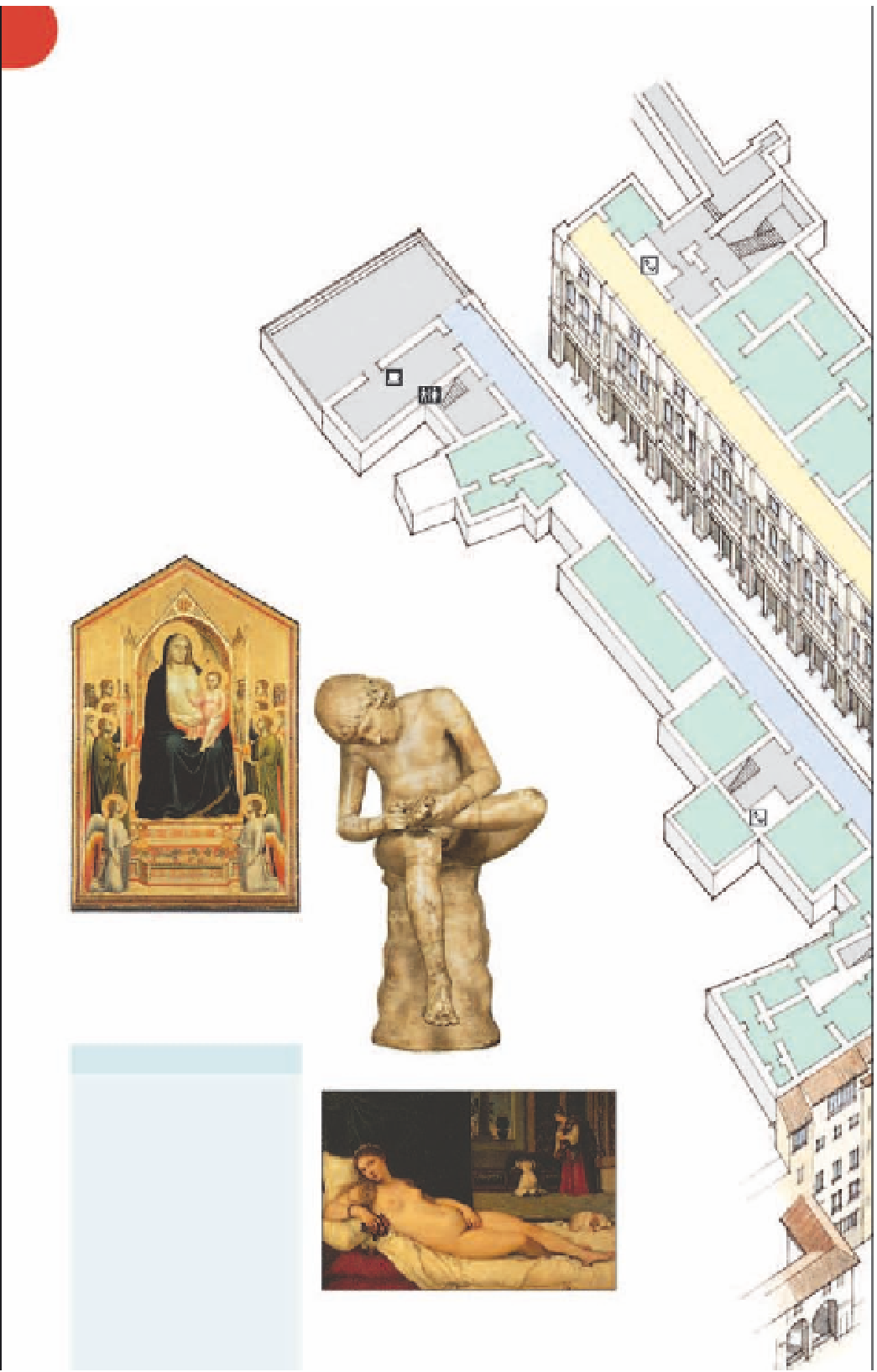Travel Reference
In-Depth Information
The Uffizi
i
The Uffizi was built in 1560-80 as a suite
of offices
(uffici)
for Duke Cosimo I's new
administration
(see p50)
. The architect, Vasari, used
iron reinforcement to create an almost continuous
wall of glass on the upper storey. From 1581
Cosimo's heirs used this well-lit space
to display the Medici family
art treasures, creating what
is now the oldest gallery
in the world. A major
expansion of the
exhibition space is
underway for 2013.
Main staircase
Entrance
Hall
Entrance
The Loggia dei Lanzi
terrace
merits a visit for
its unusual views of the
Piazza della Signoria
(see pp76-7)
.
Bar
Corridor ceilings
are frescoed in
the “grotesque” style of the 1580s,
inspired by Roman grottoes.
Buontalenti
staircase
Boy Removing a
Thorn from his Foot
This ancient Roman
statue is, like many of
the collection's
antique sculptures,
based on a Greek
original.
The Ognissanti Madonna
Giotto's grasp of spatial depth
in this altarpiece (1310) was
a milestone in the mastery
of perspective.
STAR PAINTINGS
. The Duke and
Duchess of Urbino
by Piero della
Francesca
Entrance to the
Vasari Corridor
(see pp106-7)
.
The Birth of Venus
by Botticelli
. The Holy Family by
Michelangelo
.
The Venus of Urbino
by Titian
.
The Venus of Urbino
(1538)
Titian's sensuous nude was
condemned for portraying the
goddess in such an immodest pose.
























































